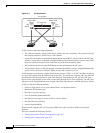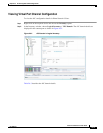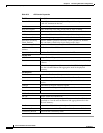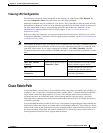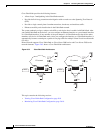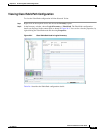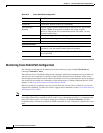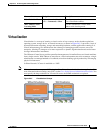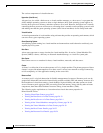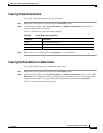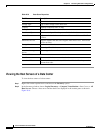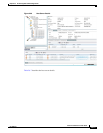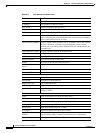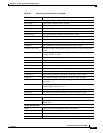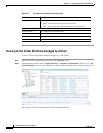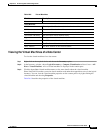
26-12
Cisco Prime Network 4.0 User Guide
OL-29343-01
Chapter 26 Monitoring Data Center Configurations
Virtualization
The various components of virtualization are:
Hypervisor (Host Server)
A hypervisor, also called a blade server, a virtual machine manager, or a host server, is a program that
allows multiple operating systems to share a single hardware host. Each operating system appears to
have the host's processor, memory, and other resources all to itself. However, the hypervisor is actually
controlling the host processor and resources, allocating what is needed to each operating system in turn
and making sure that the guest operating systems (called virtual machines) do not disrupt each other.
Virtual Machine
A virtual representation of a real machine using software that provides an operating environment, which
can run or host a guest operating system.
Guest Operating System
An operating system running in a virtual machine environment that would otherwise run directly on a
separate physical system.
Data Store
A data store represents a storage location for virtual machine files. It can be a Virtual Machine File
System (VMFS) volume, a directory on Network Attached Storage, or a local file system path.
Data Center
Data Center serves as a container for hosts, virtual machines, networks, and data stores.
Cluster
A cluster is a collection of servers that operate as if it is a single machine. The primary purpose of these
clusters is to provide uninterrupted access to data, even if a server loses network or storage connectivity,
or fails completely, or if the application running on the server fails.
Resource Pool
A resource pool is a logical abstraction for flexible management of resources. Resource pools can be
grouped into hierarchies and used to hierarchically partition available CPU and memory resources.It is
the foundation of virtual data centers, virtual desktops, high availability and other options on virtual
servers. Resource pools aggregate CPU processing power and memory, along with any other relevant
components, then share these hardware resources among virtual machines (VMs).
The following topics explain how to view and monitor virtual data center properties in
Prime Network Vision:
• Viewing Virtual Data Centers, page 26-13
• Viewing the Data Stores of a Data Center, page 26-13
• Viewing the Host Servers of a Data Center, page 26-14
• Viewing all the Virtual Machines managed by vCenter, page 26-18
• Viewing the Virtual Machines of a Data Center, page 26-19
• Viewing the Host Cluster Details, page 26-22
• Viewing the Resource Pool Details, page 26-24



